
How to Find Knowledge Transfer Partnerships (KTPs)
Knowledge Transfer Partnerships (or KTPs) connect academic expertise to innovative businesses. The programme, funded partly by UK Research and Innovation, has been around since 1975.
KTP partners and business partners for university projects are usually brought together through internal networks used by UK universities and research institutions. But sometimes, it just comes down to manual research and outreach. This process leaves a lot of valuable opportunities on the table.
In this article, we’ll explain how university knowledge exchange teams can benefit from an alternative approach, and find better opportunities for collaboration using BeauhurstImpact.
Specifically, we’ll show you how you can:
- Find companies developing new technology in your area/industry, with data from the European Patent Office, the media, UK government registers, and business records
- Research companies to learn more about the history and finances of potential partners
- Reach out to companies so you can propose new project partnerships
We’ll also show you how to find in-depth information about active KTPs in every industry.
BeauhurstImpact is our platform for universities and local government, where you can find information about the hottest UK startups, ongoing KTPs, alumni founders, and much more.
Book a demo with us to discover how your institution can benefit.
How to find the best opportunities for new KTPs
Knowledge Transfer Partnerships tend to be built around brand new technology that’s quickly changing and developing. This means you need to stay on top of the latest opportunities.
Fortunately, you can do this by using Beauhurst’s up-to-date database.
Using our advanced search filters, knowledge exchange teams find data about the most innovative or fastest growing companies in their sector or local area. Plus, with verified data on the history of over 13m UK companies, research institutions and universities can use BeauhurstImpact data to find a wealth of information about potential business partners, including financial history, past grants, and the key players at their company.
When you use BeauhurstImpact to do these searches (rather than searching manually via Companies House or InnovateUK) you know you’re accessing the most complete information possible. Our team of data scientists cleanses and curates the data so your search results are accurate and actionable. Plus, our advanced search filters enable you to focus on companies with true potential for a future knowledge transfer partnership.
Using Beauhurst’s search filters to inform new KTP proposals
There are five main ways you can use BeauhurstImpact to power your KTP strategy:
1. Find the companies that are innovating in your area or industry
Beauhurst’s data covers every company in the UK. Crucially, you can use our intuitive search filters to narrow this information down to results that match your exact criteria.
For example, a school of medicine in the north of England might want to partner with a business that’s developing new healthcare technology.
To start a knowledge transfer partnership, they’ll need to find a company that matches their research interests, is interested in continuing development, and is close enough for their students to travel for training and mentoring.
To do this, the knowledge exchange team would open up their dashboard and go to ‘Search’, then ‘Advanced search.’ Here, you can apply filters to find the companies that match your expertise—ones that might also be open to a KTP proposal.

Knowledge exchange teams often start with a search by industry. Here, you can search by SIC code, which is the way businesses are classified by Companies House. However, since SIC codes haven’t been updated since 2007, they’re not always an accurate representation of where a business sits within an industry.
To make sure you don’t miss out on opportunities with companies that are ‘unclassified’ by traditional SIC codes, you get an ‘Industries and Buzzwords‘ filter—so you can search for what a company does in language that reflects the UK’s current business landscape.
For example, this search is for businesses that work in the SIC codes for ‘Human Health and Social Work Activities‘, with an additional industry filters for ‘Healthcare products, toiletries and living aids’, and ‘Homecare (domiciliary care)‘. Add Companies House status as ‘active’ to return only active businesses.
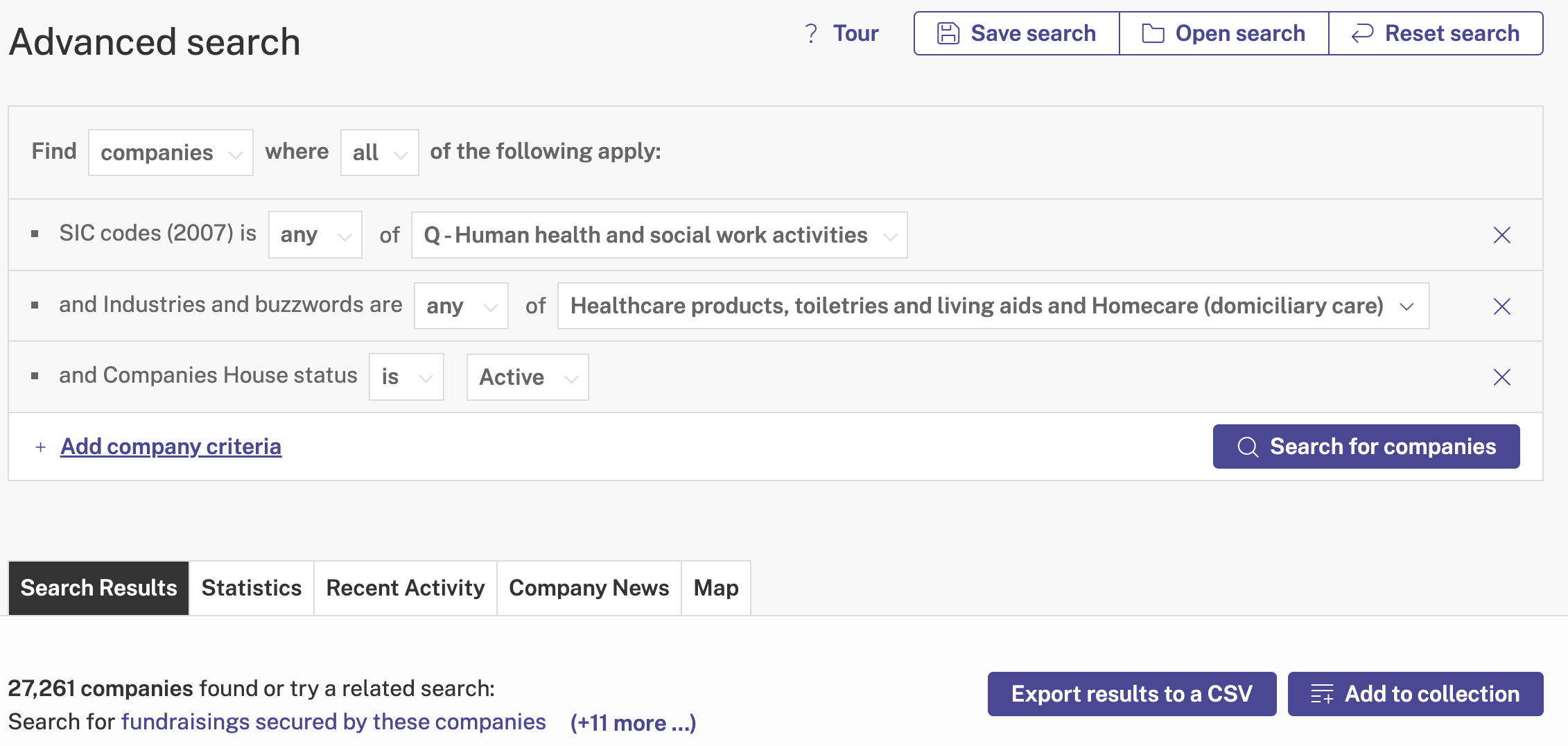
This search still shows over 27.2k businesses across the UK, so you’ll want to add another filter. Knowledge bases also tend to search by ‘Location’. You can filter by towns and cities, and by radius. For example, this search returns businesses in Newcastle.
This narrows the search down to only 71 results.
The companies most likely to be open to a knowledge transfer partnership are the ones generating new ideas for research and development.
To find these businesses, you can narrow this search even further by using Beauhurst Signals. In this case, we’ll add Innovation Signals, which successfully narrows your search down from tens of thousands to single figures.
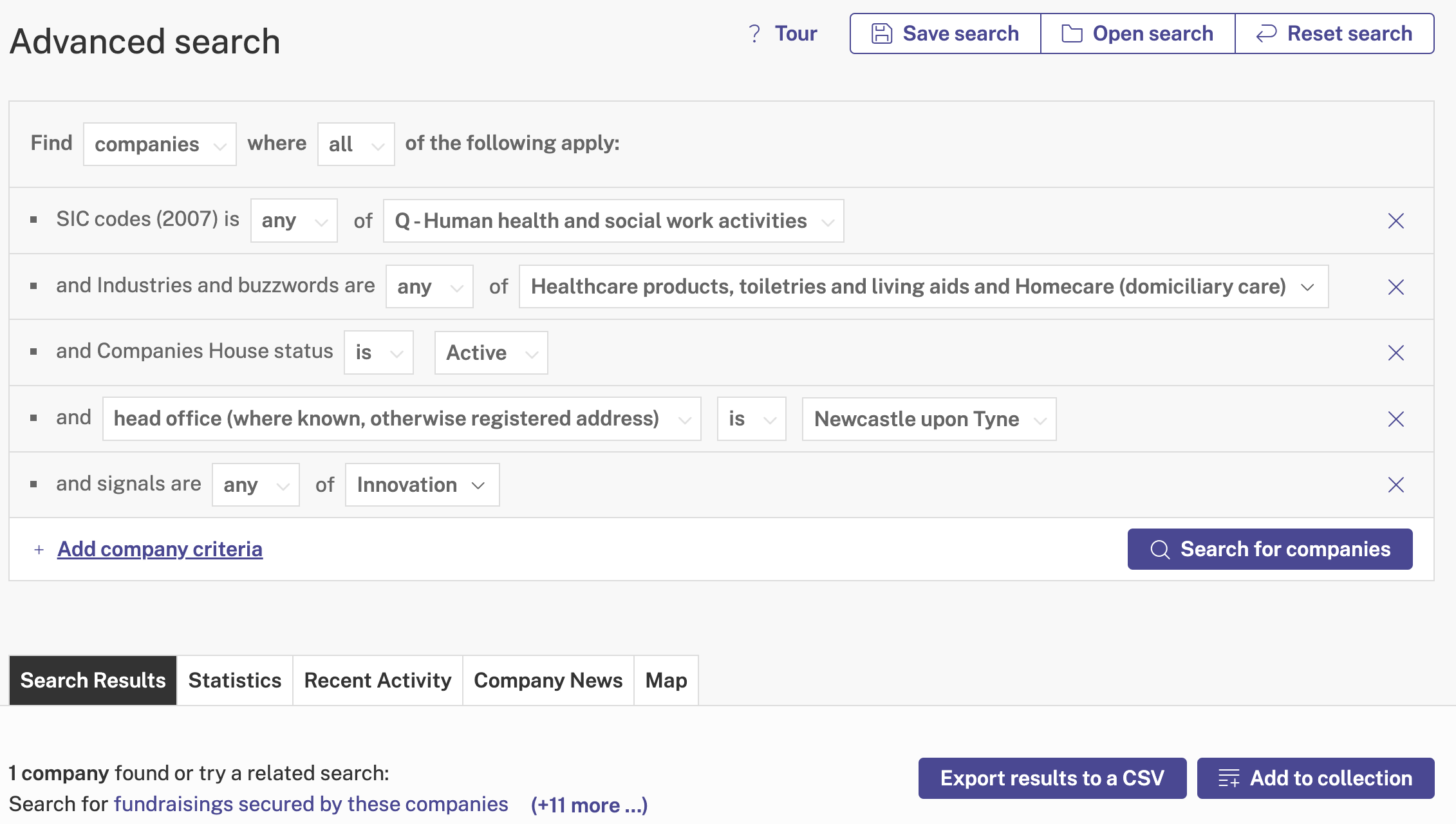
2. Verify the business’ financial history
As well as the breadth of information on Beauhurst’s platforms, our company profiles also contain verified data in granular detail. This can inform all the decisions you make about your KTP strategy.
For example, clicking through the company results will reveal its financial and fundraising history, including a timeline of significant business events (things like incorporation, grants, accounts filed, and credit rating changes).
3. Get up-to-date patent information
BeauhurstImpact also makes it easy to check whether the company you want to work with already has a patent for the technology they might want to develop during a KTP.
- The date of the patent
- The countries where the patent applies
- The patent classification
- A direct link to the details on the European Patent Office website.
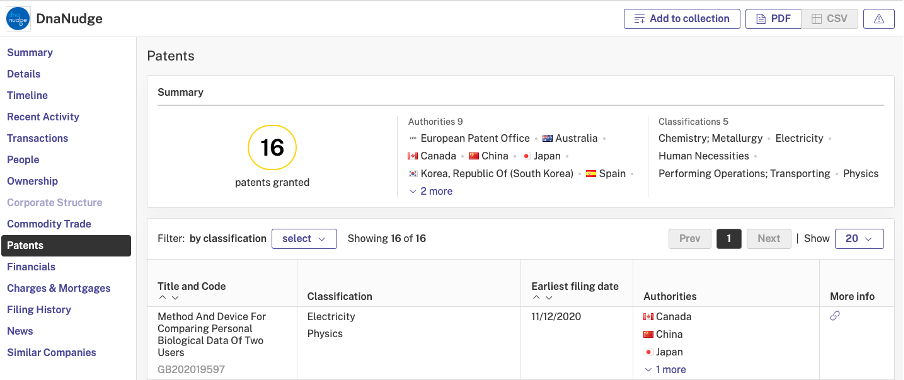
This information can give you an idea of what a potential KTP would involve.
For example, if the company has a patent, its team may be more interested in developing a system to produce it at scale. But if they haven’t been awarded a patent yet, they’re probably more invested in developing an idea into something marketable.
This is the kind of information you won’t be able to get easily anywhere else.
4. Contact potential partners
BeauhurstImpact’s profiles also contain contact information for the key players at the company. Once you’ve done your due diligence and you’ve decided to propose a new KTP, it’s easy to reach out with details about your research, experience, and results. Then, you can start a dialogue about a future KTP funding application.
To do this, go to the ‘People’ tab on the company profile. This gives you a rundown of the current stakeholders at the company, their position and function, and the directors over time.
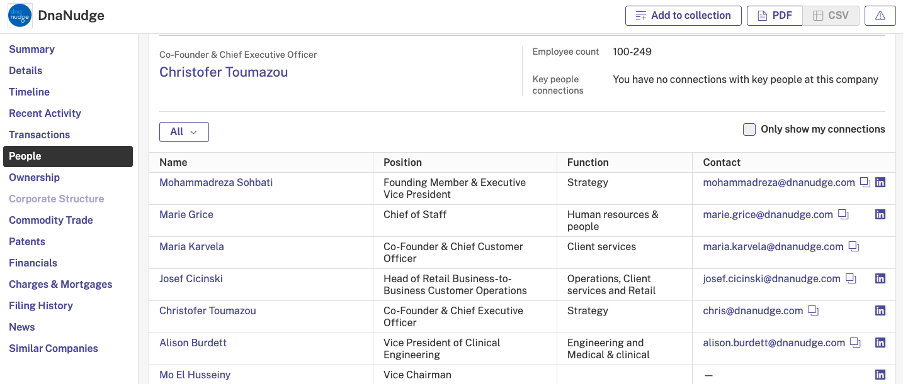
You can also click on the individuals to find out more about their careers. When you’re ready to reach out, we provide a current email address and LinkedIn profile as contact details.
Important note: BeauhurstImpact is not just a tool for scraping addresses for cold outreach. But when you need to contact a specific person to start a conversation about a mutually beneficial project, our profiles make it easier to do so.
5. Monitor the long-term impact of a KTP
Most KTPs last for no longer than three years, but they can have a long-term positive impact on all the parties involved. Knowledge bases can also add the company or the students who worked on the project to a collection to track their moves after the partnership ends.
When you add the key players in a KTP to a collection in BeauhurstImpact, you get an email notification when new information is added to their profile. Updates might include a company being granted a new patent, a business moving to a larger office, or a graduate joining a new company. It’s a great way to build your understanding of the long-term effects of a KTP, and you can use this data to advertise the success of programmes at your university.
You can set up a Collection easily from any company or person’s profile. Simply go to ‘Add to Collection’ to start your list and decide which alerts you’d like to receive.
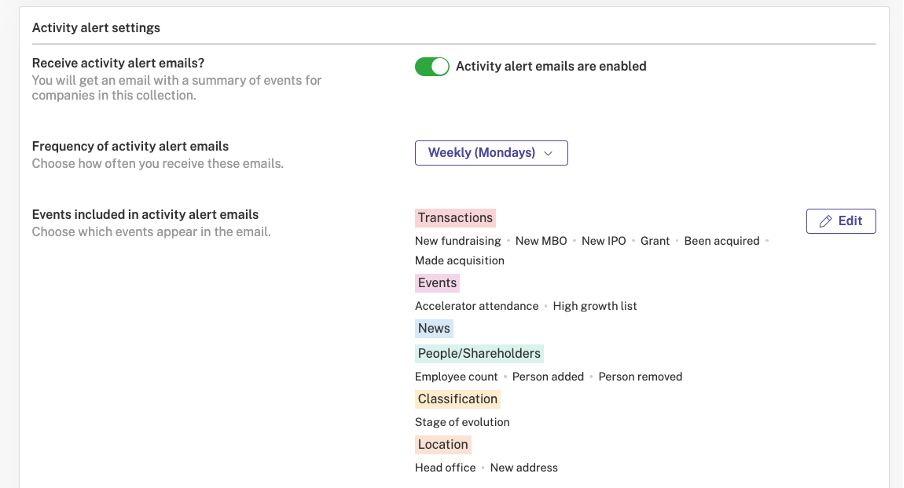
Grant search: Information about KTPs at other universities
There’s always heavy competition for research funding, so it pays for universities to monitor projects at other institutions—and for businesses to find the best-resourced knowledge bases.
Searching for past and present KTPs is a good way to understand exactly who’s involved in the latest industry developments. Although you can find active KTPs through Innovate UK, you get much more detail with BeauhurstImpact’s ‘Innovate UK Grant Search’.
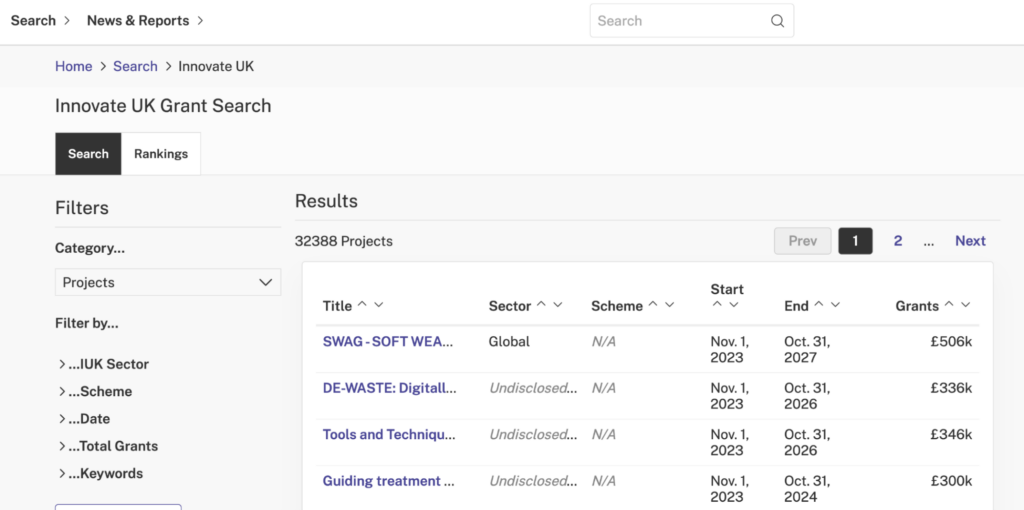
This information is useful for universities that want to understand their competition, and for businesses researching the success of past partnerships with their local knowledge bases.
Start by going to ‘Search’ and ‘Innovate UK Grant Search’. Here, you’ll find details of the 800 KTPs currently active in the UK and over 20k completed partnerships.
The headline search results, arranged chronologically or by project title, give you an overview of each KTP:
- The Innovate UK sector the KTP is associated with, such as Aging Society, Health & Nutrition, AI & Data Economy, or Clean Growth
- The start and end dates of the KTP funding
- The size of the grant the project received (this also lets you work out how much the business contributed).
You can then use Beauhurst’s filters to zero in on the information you need.
For example, to find out how many KTPs a specific knowledge base (i.e. university) is involved in, you can search by participant name.
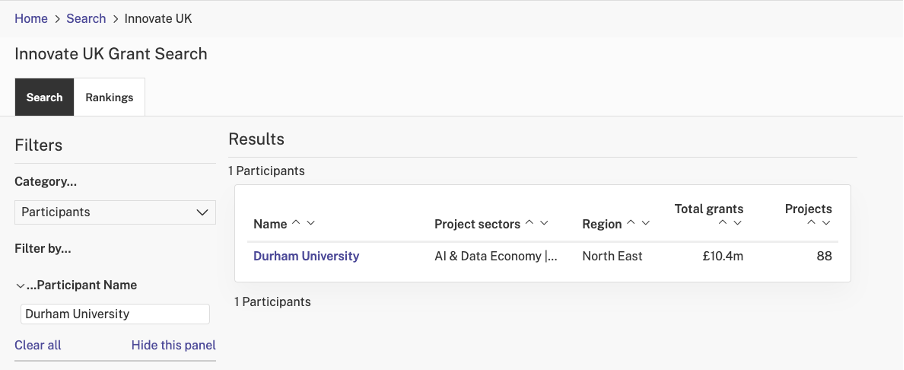
Clicking on the name will then list the projects. This is a good indication of a university’s active research interests.
If you scroll back through the completed KTPs, you can see how research priorities may have developed over time. For example, Durham University’s profile shows KTPs as far back as 2005. Historically, the majority of those projects were in the Manufacturing, Materials & Mobility sectors. However, their more recent KTPs are weighted towards Aging Society, Health & Nutrition, suggesting that their strategy has shifted and they may have more resources to devote to future projects in this area. Handy information to know.
You can also discover details about every individual KTP with BeauhurstImpact.
For example, The University of Edinburgh took part in a two-year KTP with CelluComp to develop plant-based packaging materials.
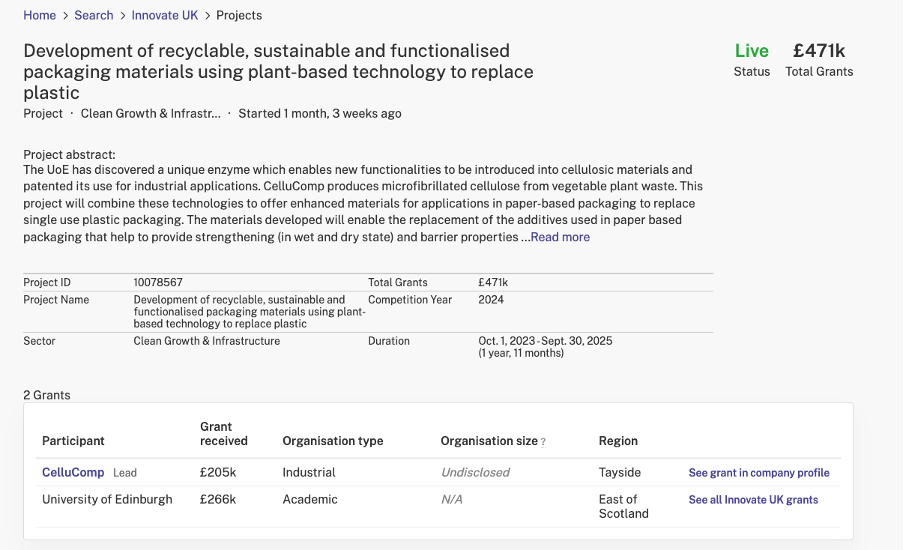
The KTP profile shows key information, such as:
- The dates and duration of the project, including whether it’s still active
- The total amount of grant funding received
- A link to the profile of the business partner, so you can find out more about how the KTP funding has helped them grow
- The published abstract explaining the goals and the significance of the research in clear terms.
This information is much more detailed than what you’d find with an Innovate UK search. Innovate UK searches include a brief overview of the partnership objective, its dates, the nature of the company’s business, and the name of the contact at the knowledge base. However, their information on current KTPs lags by several months, and they don’t include the abstract to help you understand the project. If your goal was to find out more about the business partner involved, you’d also have to leave the Innovate UK search result and find out more about the company and their funding history on another platform.
Then, when you want to reach out to the people involved, you’d have to search for their details online or contact them through their department’s front desk.
In contrast, Beauhurst’s database returns all this information in one single dashboard, helps you understand how each KTP fits into a competitor’s strategy, and gives you the information you need to discern the long-term impact of completed projects.
Your institute can stay at the cutting-edge of industry and stand out against the competition by participating in new, innovative KTPs. The only way to find the opportunities that your competitors are missing is to conduct your research using the BeauhurstImpact platform.
Book a demo today to see how it can work for you.
FAQs about Knowledge Transfer Partnerships (KTPs)
1. What are the benefits of taking part in KTPs?
A knowledge transfer partnership has two main parties:
- The business partner, with an innovative idea, but a strategic problem standing in the way of developing it. The business also provides 25–50% of the funding for the KTP and leads the project.
- The knowledge base, with the technical and academic expertise to solve the problem and come up with a long-term strategy for the business’ growth. The knowledge base also takes the lead on the KTP funding application.
Benefits for knowledge bases (universities and research institutions) include:
- Apply their research to real-world problems, proving their project’s feasibility and guiding their plans for the future
- Access a new source of funding in addition to their core QR funding from Research England and other research and innovation grants
- Gather evidence of the economic impact of their work, which can help support future funding applications
- Generate material to publish (on average, three new research projects and two new papers are created for every KTP)
- Find network opportunities to set up future collaborations, including placement programmes that can attract new students to their department.
The benefits for businesses are:
- Solve the technological or management problems that stopped them from developing their project or held them back from growth
- Get training for their staff
- Access cutting-edge technology that can increase the value of their business
- Increase their profits by developing a better product or producing it at a larger scale
- Get funding for their ideas with a much higher success rate than, for example, the Innovate UK Smart Grants. The Smart Grant application success rate is 5–10%, but around 90% of proposed KTPs are funded.
- Connect with motivated graduates who want to work in their industry—especially their KTP associates. Many universities report that around 60% of KTP associates stay at their company after the 12–36 months of the original project.
2. Is my business eligible for KTP funding?
To work with a knowledge base on an Innovate UK funding application, businesses must be:
- Based in the UK
- Established and profitable
- Large enough to support the project, usually with at least five staff members and the budget to cover their financial contribution to the KTP.
The business must also show that they have an idea that’s genuinely innovative, challenging, or impactful, and they have to explain how the solutions from the KTP will influence the way they run their business in the long term (usually the 5–7 years following the project).
3. How do I apply to be a business partner or knowledge base in the KTP programme?
Most of the universities and research institutions in the UK already have an established knowledge exchange team, and the individual departments then approach this team to scope out potential partners. If your institution still needs to be a recognised knowledge base, contact the Knowledge Transfer Advisor for information about how to become one.
Businesses become official KTP business partners when their KTP application is successful. There’s no registration paperwork to complete before the application is made, but they will have to work very closely with the knowledge base to develop the proposal and submit it during the right window of time. You can find out more about application dates and deadlines on the UKRI website.
4. Contact potential partners
KTP associate positions are some of the most sought-after graduate jobs in the UK, with 300–350 new associates recruited every year. They offer a competitive salary, mentoring, and the chance to develop management skills while getting a jump start in the industry that interests you. Open KTP associate positions are advertised through Innovate UK, and the application is usually made to the knowledge base.


